Table of Contents
Years into my keto diet journey and I absolutely love eating keto foods! Natural fats are just so rich and decadent and enjoyable to eat…
Bland vegetables are turned into a scrummy delight with the addition of lashings of butter and some cumin and turmeric.
Roasted chicken thighs are so much more juicy and enjoyable then their low fat breasty counterparts.
And steak would not be steak without a thick edge of fat…Or marbled throughout, if you’re fortunate enough to have tried the melt-in-your-mouth wagyu steak (I haven’t yet).
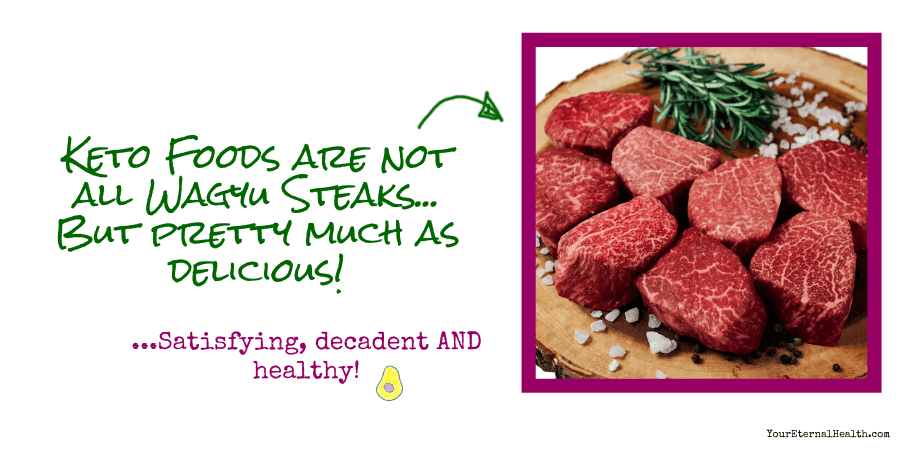
Whether I’m in ketosis at any given time or not, I always embrace an abundance of low carb keto foods, instead of the old high carb fare that I used to constantly reach for before as a vegan.
The 2 Big Keto Food Questions…
If you’re new to keto, or coming back to it after some time off, it can take a bit of mental adjustment to get used to the idea of all that fat.
You’ll need to satisfy these two questions in your head in order to start and succeed with confidence and gusto.
- “With no sugar, bread, pasta, rice, potatoes, starchy veg and fruits, baked goods, cakes, sweets, sodas…what on earth can I eat on the keto diet?!“
- “Is all that fat REALLY good for me?”
The simple answer is:
- Eat plenty of high-quality fatty foods
- Yes, fat is not only good for you but essential.
If you’re not convinced on point 2 then check out my articles on saturated fat foods, the world’s top keto doctors and 21 solid keto diet benefits. Also, you can grab yourself a copy of my Keto 101 course.
Optimum Keto Foods Macronutrient Ratios
On your keto diet, the optimum macronutrient ratios that you should be aiming for are as follows (based on a 2,000 calorie per day diet):
- 80% of your calories from fat (1600 calories, 178g)
- 15% of your calories from protein (300 calories, 75g)
- 5% of your calories from carbohydrates (100 calories, 25g)
See more examples of keto macros and how to work out your optimum calories here.
An important point to note is that on the ketogenic diet calories still matter! If you’re a small, sedentary woman, you can’t expect to eat 3,000 calories of fat and not gain weight. So be smart with calories, as well as macros by following a well-formulated keto meal plan.
Low Carb Keto Foods to Eat
In order to get into ketosis and stay there, you need to make sure that most of your foods are fats and oils in their various forms.
At first blush this can sound like we’re chugging down tablespoons of coconut oil and bulletproof coffee with little else, but that’s not the case.
As well as fats and oils, you’ll be eating meat, eggs and oily fish, low carb vegetables and leafy greens (alkaline foods), low sugar fruits, herbs and spices and other miscellaneous pantry foods (including some natural sweeteners and nut flours if you like –helloketo cookies, cakes, pastas, breads and pizzas as treat foods!).
But remember, we want to be cooking and preparing our keto diet foods as healthfully and naturally as possible.
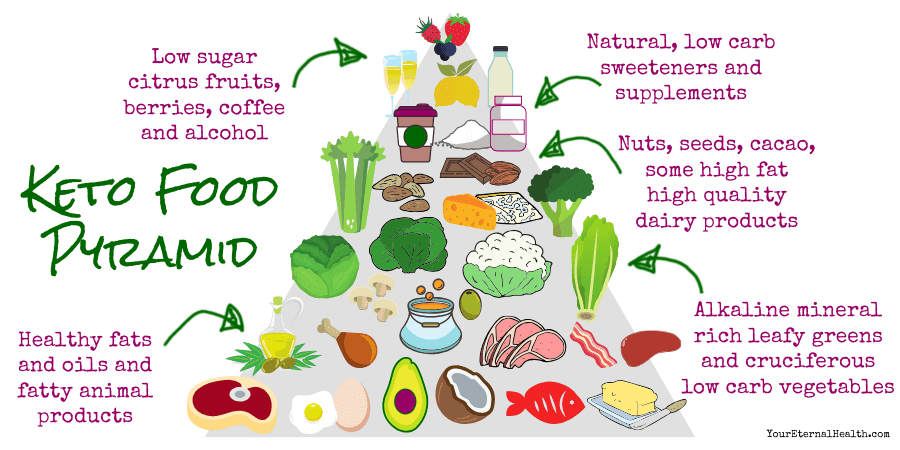
So let’s dive into to list of keto foods we can eat freely, ones to eat sparingly and foods (both non-keto and ‘dirty keto’) that we should avoid altogether…
Download your free colour-coded Keto & Alkaline Diet Foods List PDF here.
Fats and Oils – Key Keto Foods
When it comes to fats, they’re by no means all equal. A big key to thriving on the keto diet is to get your type of fats dialled in as well as your amounts.
Let’s be clear, we never find any one type of fat in isolation (not naturally anyhow). For example, animal fats contain some unsaturated fats and plants contain some saturated fats:
Butter
Saturated: 68%
Monounsaturated: 28%
Polyunsaturated: 4%
Coconut Oil
Saturated: 92%
Monounsaturated: 6%
Polyunsaturated: 1.6%
Olive Oil
Saturated: 14%
Monounsaturated: 75%
Polyunsaturated: 11%
However, it is important to know the different types of fats that predominantly occur in different foods and their affect on our bodies and health.
We want to be focusing on natural, simply extracted, saturated and monounsaturated fats, moderating polyunsaturated fatty acids (PUFAs) and eliminating trans fats and hydrogenated fats. Industrial vegetable oil PUFAs and trans fats are amongst the most unhealthy foods for you.
With this in mind, you will not thrive at all on 178g of vegetable oil each day, even if you eat plenty of alkaline and natural foods and hit your correct keto macros. In fact, this way of eating would be extremely dangerous and likely lead to heart disease and and a whole host of other health issues before long. You’d resolutely conclude that “the keto diet didn’t work for me.” [BTW This is the kind of diet and fats that many of the clinical trials ‘debunking’ the effectiveness of keto use.]
Saturated Fatty Acids (SFAs)
Saturated fats are tolerated well by most people – even those whose digestive system seems to be sensitive to fats (probably due to industrial vegetable oils).
They are chemically and heat stable (since they have all of their ‘chemical bonds’ taken up – no ‘double bonds’, which can readily attach to another atom), so they are the only recommended type of fat for cooking with.
I never cook with anything other than saturated fats and you shouldn’t either.
On a keto diet, we should be eating plenty of healthy saturated fats. [If you’re still worried about cholesterol and saturated fat, see may article Saturated Fat Foods – Aren’t They Bad For Us?]
Saturated fats to eat in abundance:
Butter
Ghee
Coconut oil
MCT oil (medium chain triglycerides)
Beef tallow
Lard (if you choose to eat pork)
Cocoa butter
Fatty cuts of meat
Saturated fats to eat sparingly:
Cream Cheese
Palm oil
Full fat Greek yoghurt
Whole milk
Monounsaturated Fatty Acids (MUFAs)
Monounsaturated fats have one double bond – which means that they’re not as chemically or heat stable as saturated fat, but not as reactive as polyunsaturated fats with many double bonds. They are good for us, taste great and complement the saturated fats in our diet well.
The most common MUFA found in food is oleic acid, a fatty acid that occurs naturally in vegetable and animal oils, especially olive oil, avocados and almonds. Monounsaturated fats have great benefits, such as helping your bones to absorb calcium well, improving your mood, reducing inflammation in your body and reducing risk of cancer and heart disease.
Monounsaturated fats to eat in abundance:
Avocado oil and avocados
Extra virgin olive oil and olives
Duck fat
Macadamia nut oil and macadamias
A note on avocados…Avocados are both a low carb ketogenic food and an alkaline food and an are amazing for so many reasons…Not least their monounsaturated fat content and their amazing amount of Potassium.
Really, it could be said that avocados are keto diet royalty. I aim to eat at least one every day and so should you.
Oh BTW, I have a totally delicious Chocolate Avocado Muffins Recipe, you’ll love it!
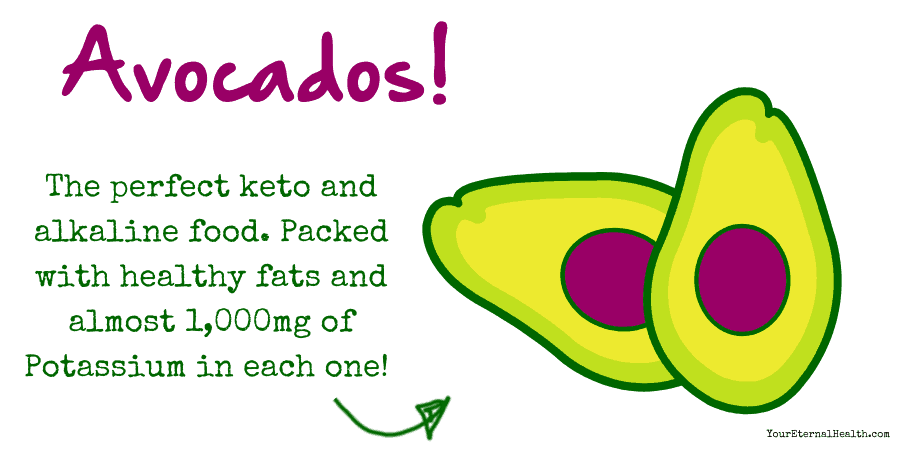
Monounsaturated fats to eat sparingly:
Nut oils, butters and nuts – almonds, pecans, walnuts, brazils, peanuts.
Polyunsaturated Fatty Acids (PUFAs)
Polyunsaturated fats have many chemical double bonds and are very chemically and heat unstable.
It’s important that we make a clear distinction in the PUFAs…
Naturally occurring polyunsaturated fats in animal products and fatty fish are great for you, and you should eat them.
Processed polyunsaturated fats in ‘heart healthy’ margarines, industrial vegetable oils and butter/cream substitutes are bad for you, VERY bad for you, so avoid them at all costs.
There are two main types of polyunsaturated fat: omega 6 and omega 3 fatty acids. They differ in their chemical structure and where their double bonds occur, as well as the unique effects that they have on our health.
Omega 3 Vs Omega 6 PUFAs
We need both, but it’s important to keep our intake of omega 3 and omega 6 fatty acids in balance – in our modern western world, most of us get far more omega 6s than we need (especially in the form of arachidonic acid) and that can cause inflammation and health issues.
The ideal ratio is around 1:4 omega 3 fatty acids to omega 6s but for most people it’s around 15:1 or 20:1 and this causes inflammation. Aim to get this ratio in better balance. A well formulated keto diet focusing on animal and healthy plant fats can help this greatly.
DHA and EPA (types of Omega 3s) can help reduce inflammation and are great for your cellular health. They form part of the cell membranes in your whole body and affect your cell receptors. They also are essential in making hormones that regulate your blood, heart, and gene function.
Omega 3s also play an important part in fetal health and growth and sperm function, so if you’re planning on getting pregnant or one of your children is, be sure to up the omega 3s. The keto diet is pretty well-known for helping fertility.
If you have skin issues like eczema or joint pain like rheumatoid arthritis, you’d do well to up your intake of omega 3s.
Great sources of omega 3s include wild salmon, sardines, mackerel, grass-fed beef, cod liver oil, walnuts, flaxseeds, as well as – more surprisingly – Brussels sprouts and cauliflower.
FYI, there are also omega 9 fatty acids that are found in sunflower seeds, olives and hazelnuts, these are not as important as they’re ‘non essential’ – our bodies can make them.
Polyunsaturated fats to eat in abundance:
Mackerel
Wild caught salmon (sockeye and keta)
Sardines
Herring
Anchovies
Cod liver oil (good quality)
Egg yolks
Grass fed meat
Polyunsaturated fats to eat sparingly:
Nuts and seeds and their oils
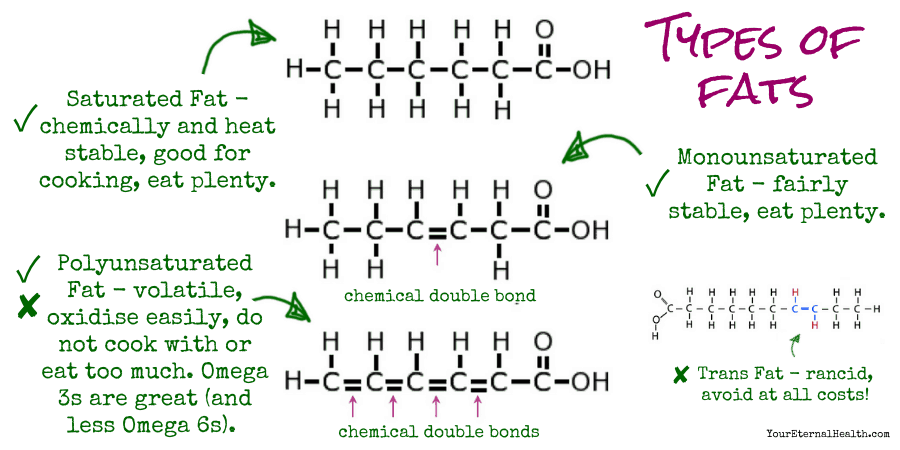
Protein – Meat, Eggs & Fish
You can go forth and eat plenty of meat, eggs and fish on keto…Just remember that it’s not the paleo or Atkin’s diet, so watch your protein levels and make sure the fat content is high.
If you’re on a tight budget, good news – it often works out cheaper to eat grass fed, organic fattier cuts of meat on keto than the lean chicken breast type meats that are the most popular.
Personally, I just love eating chicken thighs, as well as all sorts of liver, kidneys, hearts and other organ meats…
Honestly, organ meats are delicious and so nutritious and cheap – give them a go! Offal’s served in all the top restaurants and by many of the world’s top chefs you know.
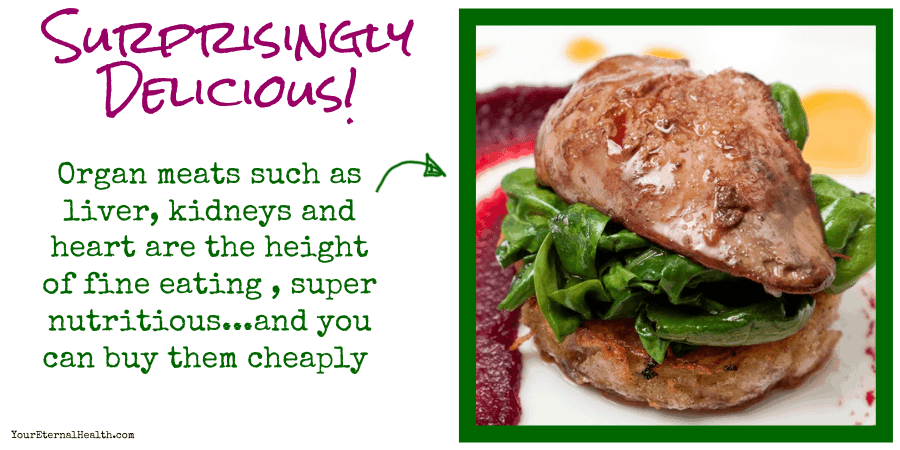
I also like to get a big pack of cheap organic beef bones full of anti-ageing, skin-beautifying and bone-nourishing collagen and marrow and make a huge Instant Pot of bone broth.
Traditional cultures have always preferred the organ and fatty cuts over the lean muscle meat and have eaten it for thousands of years and thrived on them.
People who still think animal fats are bad for you are missing out, so take advantage of the fact that minsinformed food preferences means that these foods are less popular and cheaper.
Animal Products to eat in abundance:
Grass-fed, fatty cuts of meat
Organic organ meats
Wild-caught oily fish
Pastured, organic eggs
Animal products to eat sparingly:
Conventionally raised meats and eggs
Deli meats
Farmed oily fish (can contain very high levels of toxins though)
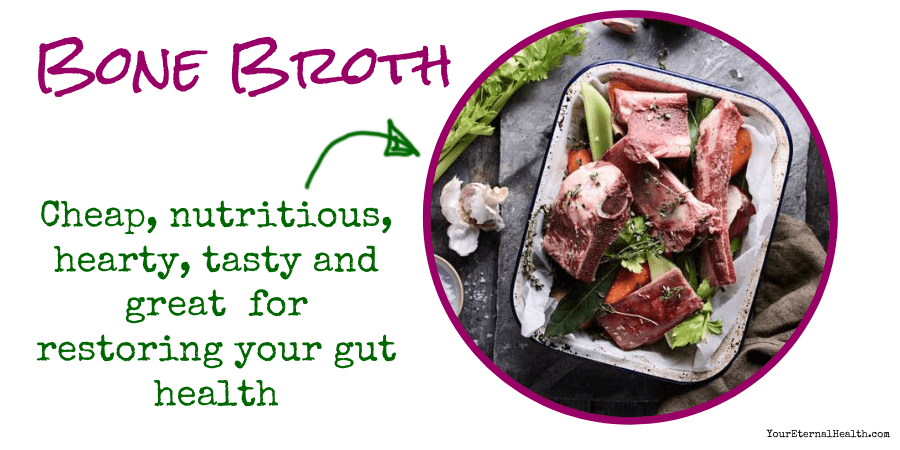
Low Carb Vegetables & Leafy Greens (Alkaline Keto Foods)
Vegetables to eat in abundance:
Leafy greens – spinach, lettuce arugula, Swiss chard…
Cruciferous veg – broccoli, cauli, Brussels sprouts…
Other low carb veg – asparagus, celery, zucchini, tomatoes, mushrooms…
Vegetables to eat sparingly:
Higher carb veg – peppers, green beans, cucumber, garlic, onions…
Low Sugar Fruits
Fruits for the most part are out on our ketogenic diet bit there are a few delicious, antioxidant-rich and anti-ageing exceptions…
Fruits to eat sparingly:
Berries – blackberries, gooseberries, raspberries, strawberries, blueberries, cranberries (unsweetened)
Lemons
Limes
Grapefruit
Olives and avocados (technically fruits)
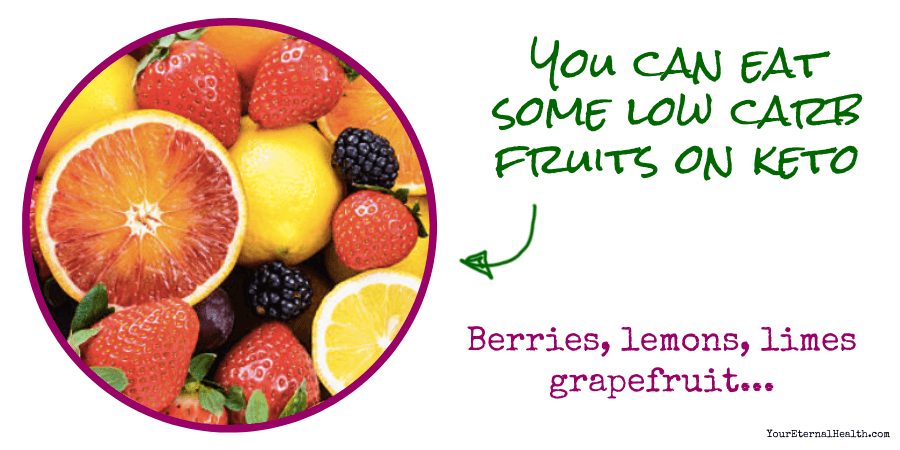
Low Carb Beverages
Beverages to have in abundance:
Filtered water
Herbal teas
Sparkling mineral water
Coconut milk (unsweetened, carton or can)
Almond milk (unsweetened)
Bone broth
Beverages to have sparingly:
Coffee and ‘Bullletproof’ butter coffee (organic, single origin, 100% arabica)
Tea – black and green
Keto hot chocolate
Vegetable juice
Wheatgrass juice
Lemon and lime juice
Low carb alcohol – prosecco, low carb beer, spirits, dry red or white wine (limit to one glass)
Other Low Carb Foods – Sweeteners, Spices & Pantry Foods
Low carb sweeteners, spices and pantry foods to eat in abundance:
Herbs, sea and Himalyan pink salt, apple cider vinegar, cinnamon, turmeric, cumin, ginger, vanilla bean, mustard, collagen, gelatin, shirataki ‘miracle’ noodles, rice and pasta (if your stomach takes them well).
Low carb sweeteners, spices and pantry foods to eat sparingly:
Stevia, erythritol, monk fruit sweetener, yacon root, balsamic vinegar, black pepper, garlic, nutmeg, 70%+ dark chocolate and cacao or cocoa powder, low carb protein bars like Quest bars.
Foods To Avoid
Non Keto Foods To Avoid
Given that our keto diet is 80% fat, 15% protein and just 5% carbs (that’s around 25g of net carbs), it goes without saying that foods containing any significant amount of carbohydrates need to be skipped.
With that in mind, we need to avoid all sugar, high fructose corn syrup, flour, wheat and grain based products, potatoes, beans, honey, dextrose, starchy veg and most fruits and alcohol.
Isn’t it reassuring to know that it’s not essential for us to be eating carbs? There are essential fats and proteins that we need to get from our diet but there are no essential carbs. I always feel this adds weight and credibility to our choice to go ketogenic.
Our bodies will be quite happy burning fat for fuel once we get in to ketosis and you’ll find your cravings for carbs diminish greatly. We can get all the nutrients we need from the two other macronutrients and mineral rich foods.
[You can download my free Quit Sugar and Curb Carb Cravings Plan here.]
‘Dirty Keto’ Foods To Avoid
Dirty keto foods are those foods that technically fit into the keto macronutrient ratios but are full of chemicals, preservatives, rancid vegetable fats, margarines, artificial sweeteners (such as aspartame, xylitol, saccharin, acesulfame Potassium, neotame, sucralose), and the like.
A lot of ‘keto/low carb bars’ and packaged keto goods fall into this category.
Will you lose weight with dirty keto? Yes probably, but you’ll sacrifice good health and can expect gas, bloating, inflammation, cravings ‘keto flu’ symptoms (low electrolyte symptoms) and you’ll likely rebound with any weight you do lose.
It’s worth making explicitly clear that we should completely avoid trans fats and hydrogenated fats as they’re linked to heart disease and cancer.
These are highly processed industrial fats that are chemically altered (hydrogenated) to improve shelf life and they’re often the culprit in blocked and hardened arteries. They are found in most packaged foods and quite a lot of dirty keto foods.
Other foods to avoid as far as possible are GMOs and GMO and corn fed animal products, conventional and homogenised dairy (which can contain a lot of toxins) and low carb veg and fruits on the ‘Dirty Dozen’ list.
List of ‘Dirty Dozen’ foods
- Strawberries
- Spinach
- Nectarines
- Apples
- Grapes
- Peaches
- Cherries
- Pears
- Tomatoes
- Celery
- Potatoes
- Sweet Bell Peppers
These twelve crops contain the highest levels of pesticide residue so you should buy organic when possible. Strawberries, which top the list, can contain 22 different types of pesticide residues in just one sample.
Bacon is a tricky one as well as a lot of bacon contains nitrites and sugar. See my article on keto diet bacon.
Keto Recipes
For the past two years, I have spent most of my waking and working hours (ok slight exaggeration, but not much…) creating, testing and enjoying keto recipes and pouring my heart and soul into writing my various keto recipe books and meal plans – keto breakfast recipes, keto diet snacks, keto desserts, keto alkaline etc.
They use all the clean and keto foods that we’ve looked at (with plenty of alkaline foods too) in creative, easy and delicious ways that will delight you, as they have me and many other people.
You can get over 70 of these well-formulated keto recipes and a 3-week meal plan in my Keto Life program, I’d love for you to enjoy them and succeed on keto with them – to reach your health goals and a slim and energised body. It really is a great keto diet plan for beginners and experienced keto dieters alike.
Many of our KL members have their own favourite recipes that they know and love…
Paul loves my Keto BBQ sauce. Owen and Rita love my keto green smoothies and chocolate desserts. Dora loves the strawberry cheesecake fat bombs…
Do join us if you’d like! There’s a live coaching group starting very soon…
Keto Diet Meal Plan
Additionally, I have also created new themed keto recipes and keto meal plans with my Keto & Low Carb Coaching Club. Many people go through Keto Life and then join KLCC (or vice versa). You can find out more here…
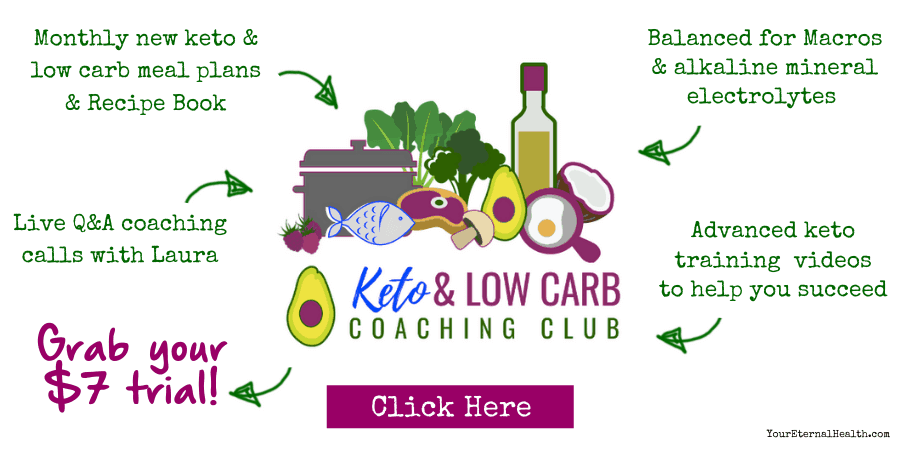
5 Keto Diet Mistakes When Choosing Keto Foods
When I was a keto newbie, I made loads of mistakes that scuppered my progress and disheartened me for a while. I though I’d include the top 5 keto diet mistakes that I and many other people have made, so you can learn from our folly and avoid them!
1. Not following a well-formulated plan or counting macros
You have to either count your macros or follow a good keto meal plan – it’s one or the other. ‘Lazy keto’ won’t cut it in the beginning stages when you’re adjusting to this new way of eating.
You won’t get into ketosis by accident and it’s supremely easy to overeat on carbs and protein and under-eat on fat. So choose one or the other, or both, and do it for at least 3 weeks ideally, to get a feel for you keto macro ratios.
2. Not transitioning and tapering your carbs before getting into ketosis
If you expect to go from a high carb standard western diet into healthy ketosis with all the benefits and fat loss overnight then you’ll probably have an unpleasant shock (sorry!).
You need to spend between 1-3 weeks tapering down your carbs and transitioning. I have a full transition plan and then 3 weeks full keto plan in my Keto Life 30-day program, if you want to check that out.
3. Too many keto cakes and treats
Yeah, they’re super tasty and can be part of a healthy keto diet but just don’t overdo it on the fancy (and more expensive) low carb desserts and treats. They often contain sugar alcohols like erythritol, which, although is naturally-derived, is not great for you. You’ll do best on a low-processed diet with a few simple ingredients in each meal, with plenty of alkaline foods like leafy greens.
[Check out my Sugar-Free Chocolate Dessert Recipes (Low Carb) for delicious, simple low carb recipes that don’t contain sugar alcohols erythritol – great for transitioning into your keto diet.]
4. Eating too much dairy
Unless you buy raw organic, pasture raised dairy products, dairy foods are not ideal as they’re often very inflammatory. This is due to their being homogenized, pasteurized, with traces of hormones, antibiotics, dirty GMO cattle fed and pus levels…
Unfortunately, the husbandry of farm animals is not as clean as it used to be with the advent of modern feeds and factory farming – sad, but true.
Additionally, because we can’t easily digest the protein casein in milk (especially type ‘A1’ milk – many people are intolerant to it), it’s good to minimize dairy.
Dairy can form a lot of mucus in your body. As a singer, I know that if I have a big choir concert coming up, I need to cut dairy completely for a month for so before, so that my throat is mucus-free and my voice is at its best.
5. Eating too many nuts and seeds
Nuts and seeds can have their place on keto if you want but there are a few things to be aware of…
Firstly, because of their high Omega 6 fat content, it can throw off your optimum ratio of Omega 3 to Omega 6 fats (which should be as close to 4:1, or lower as possible).
Also, nuts contain high levels of ‘lectins’ which are a kind of anti-nutrient which can block you body’s ability to absorb nutrients and cause a lot of inflammation in some people.
Remember to ‘soak your nuts’ to remove the lectins in the skin and you can also sprout your nuts and seeds to turn them into living, alkaline, packages of super energy and nutrients!
Free Printable Keto Foods List PDF
You can download my free Keto (and Alkaline) Diet Foods List here – it’s a full-color coded printable PDF that you can take shopping with you.
